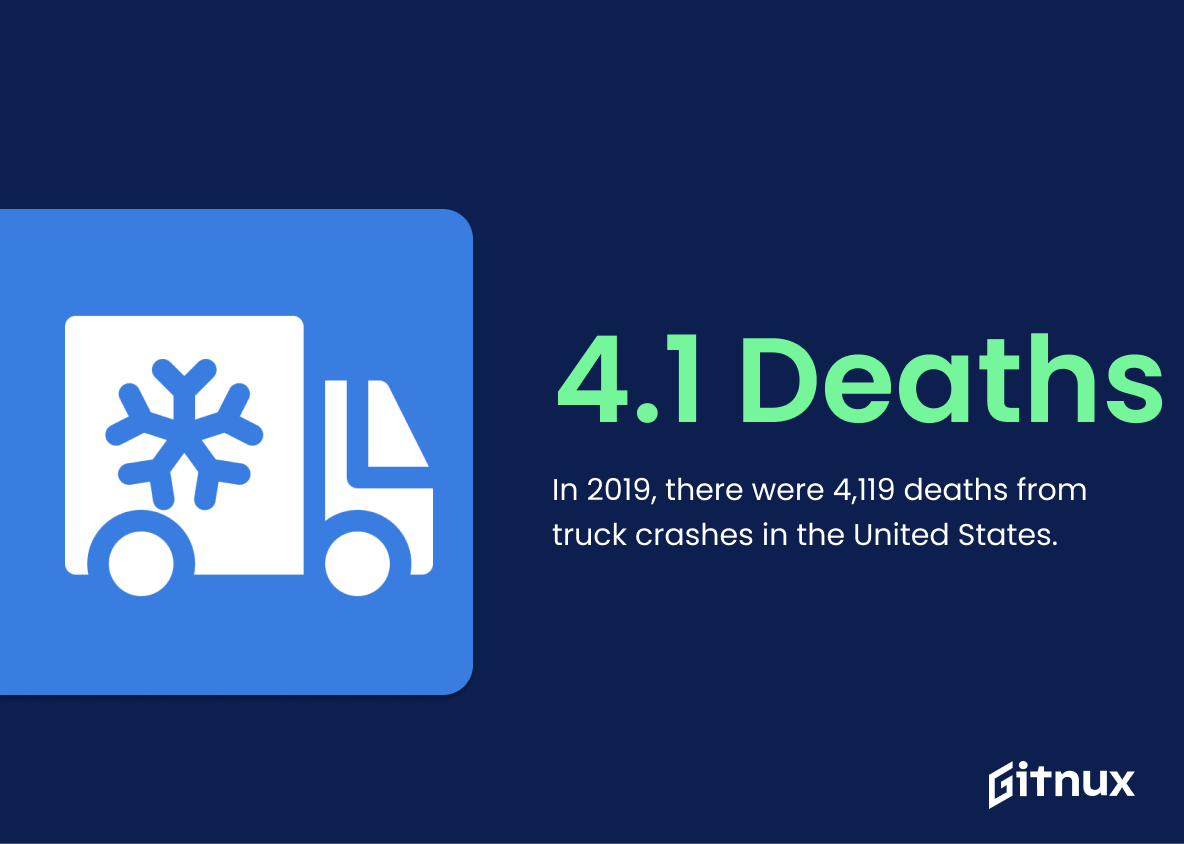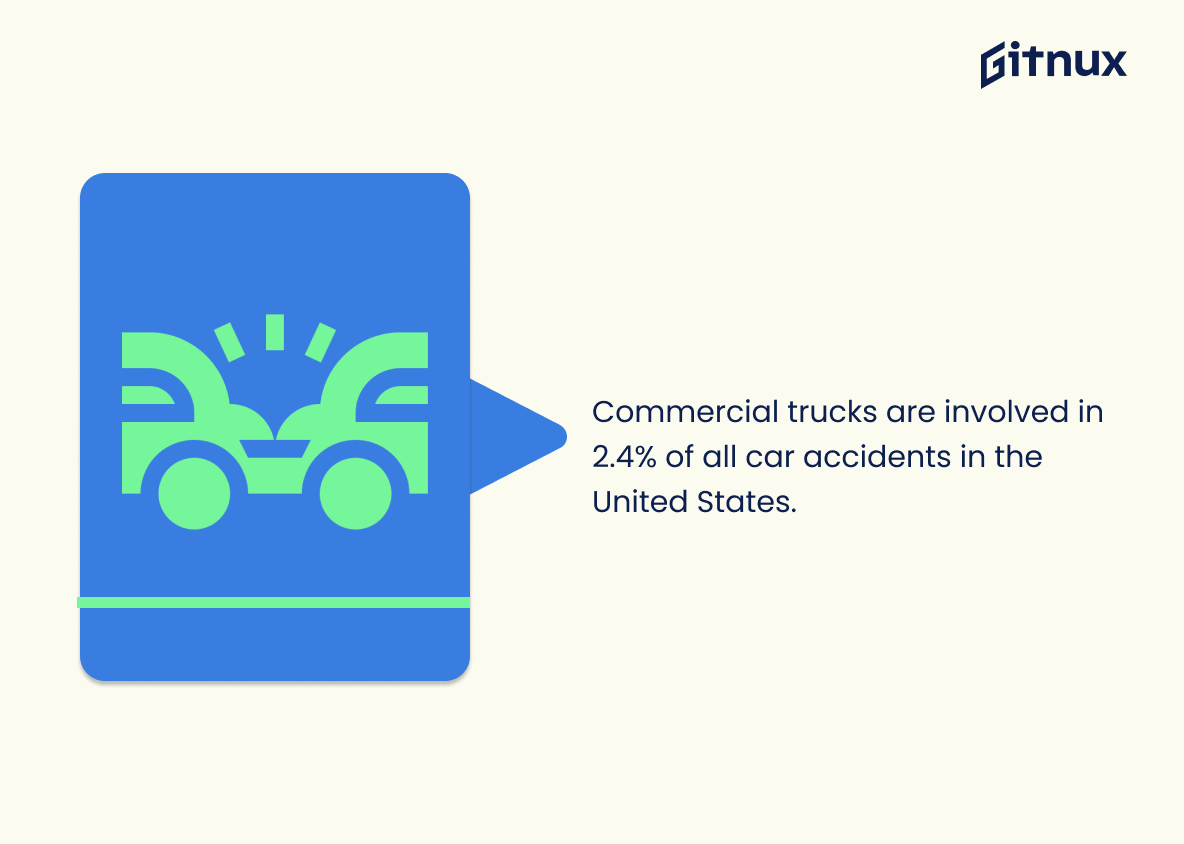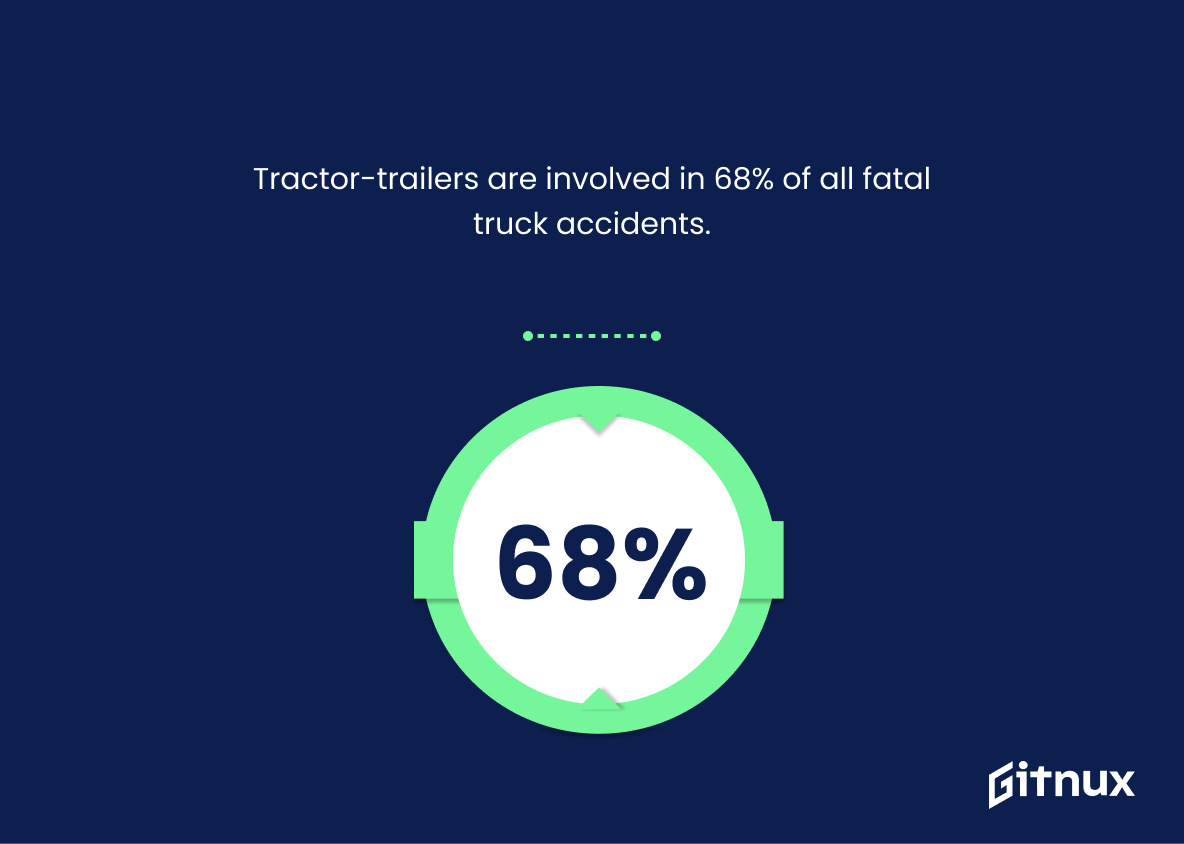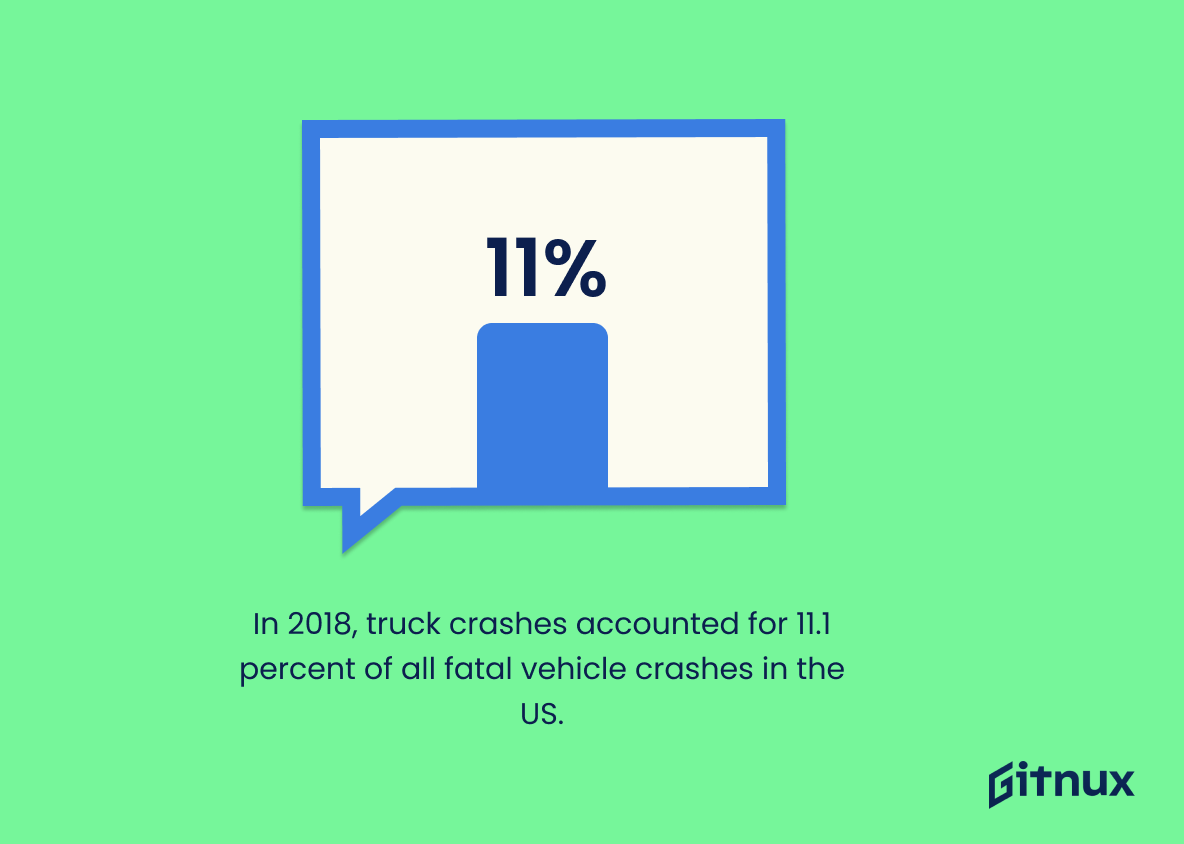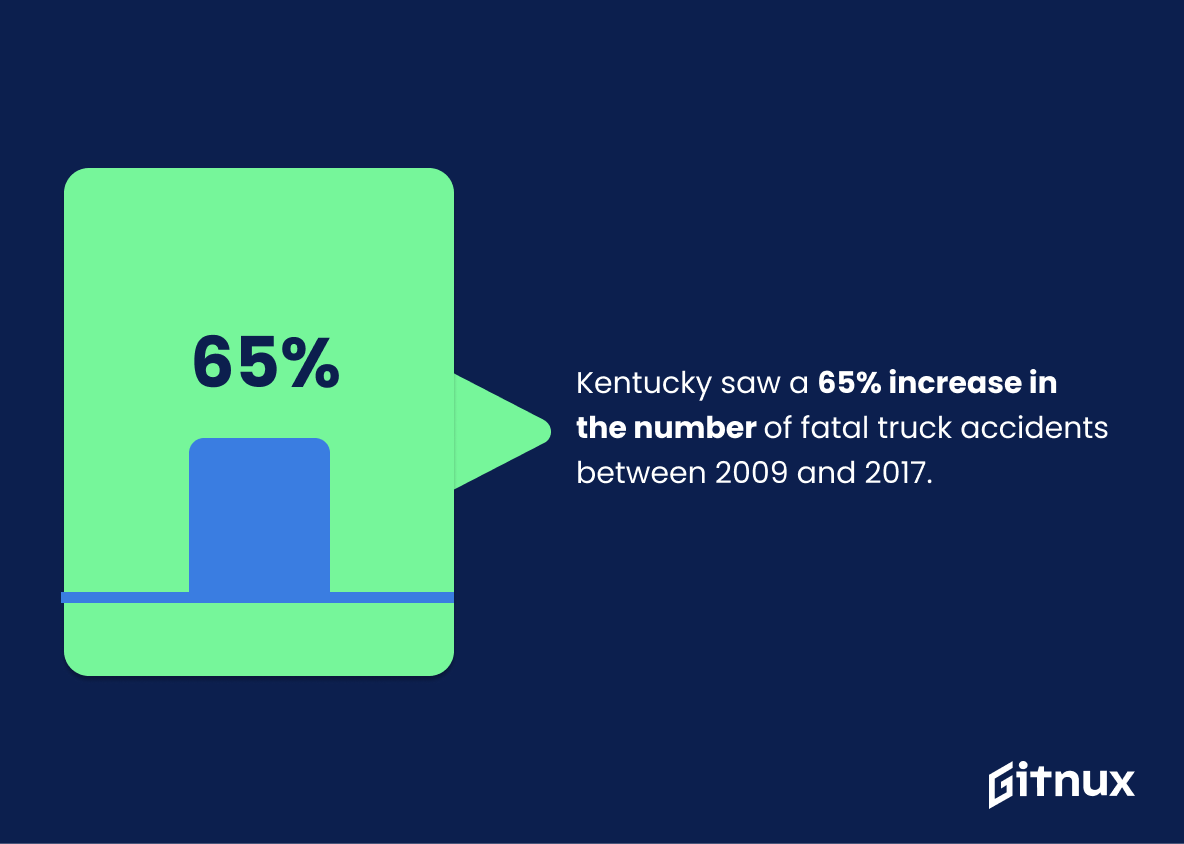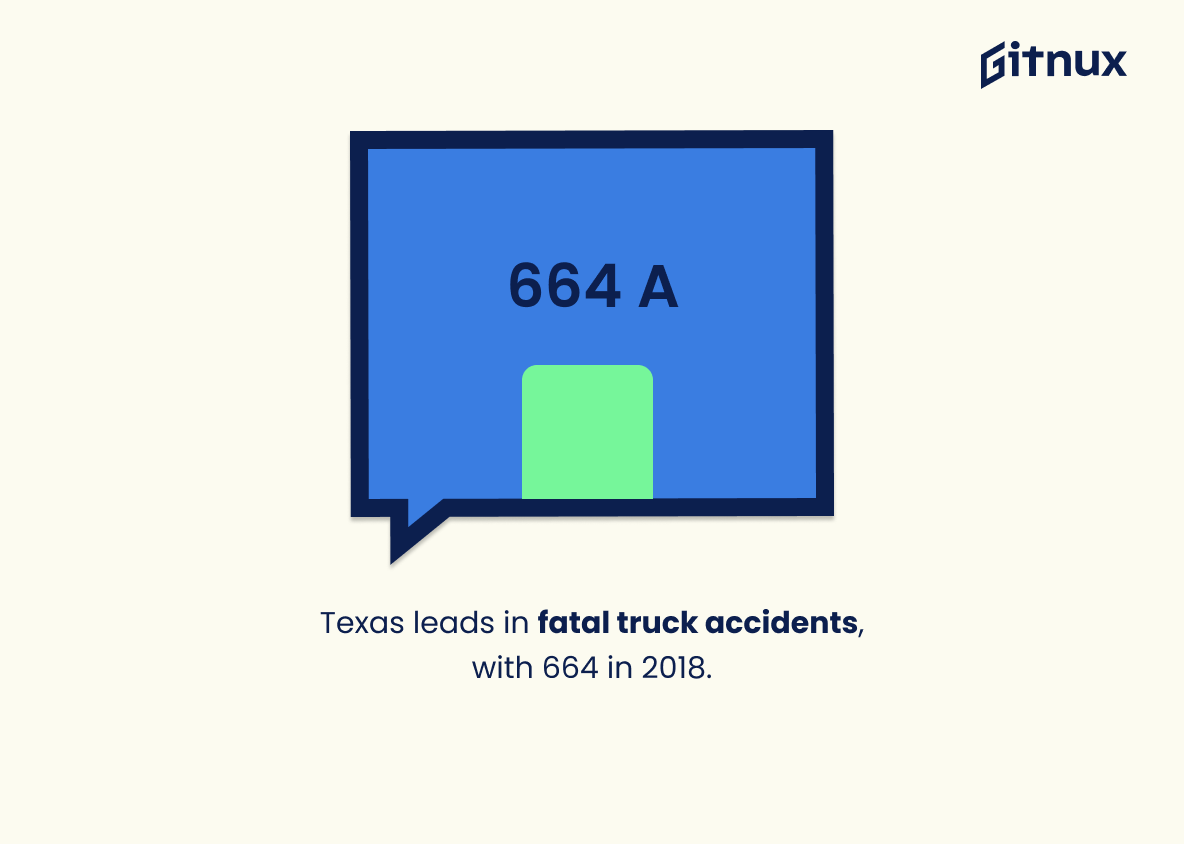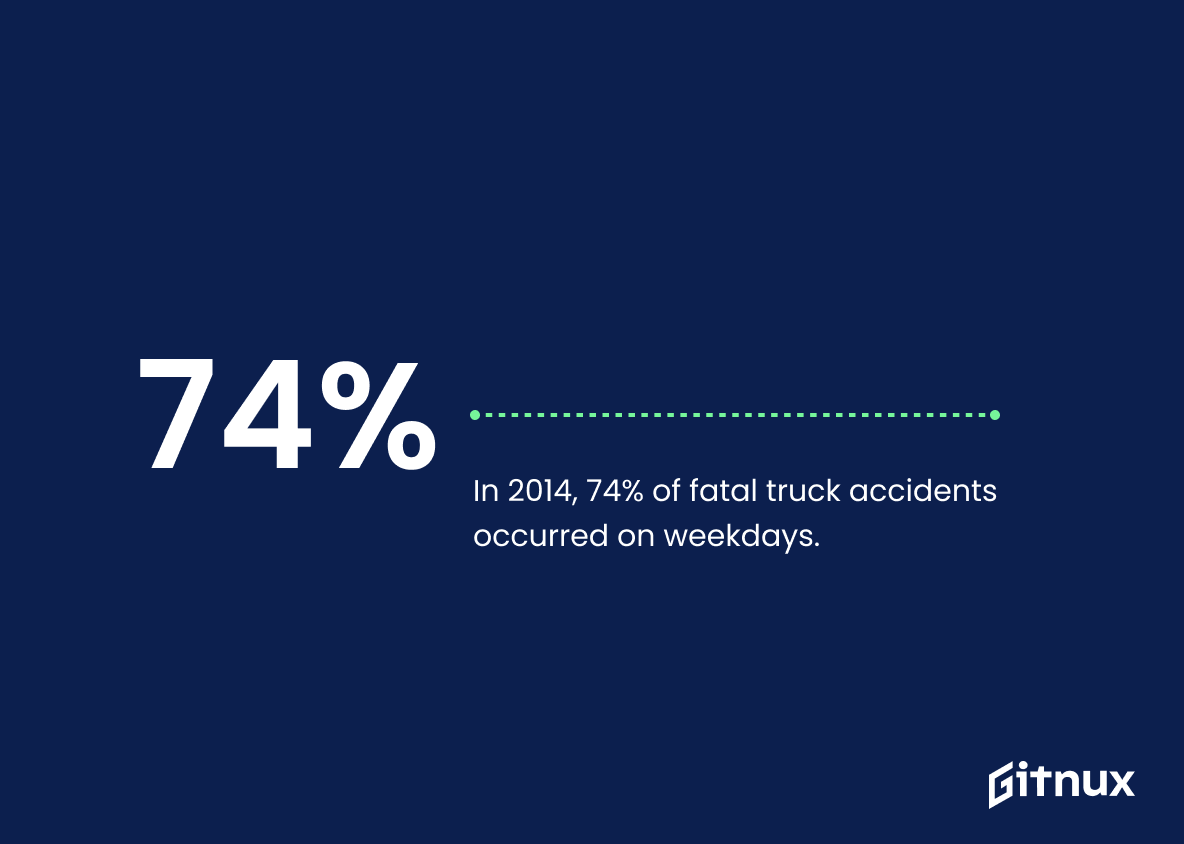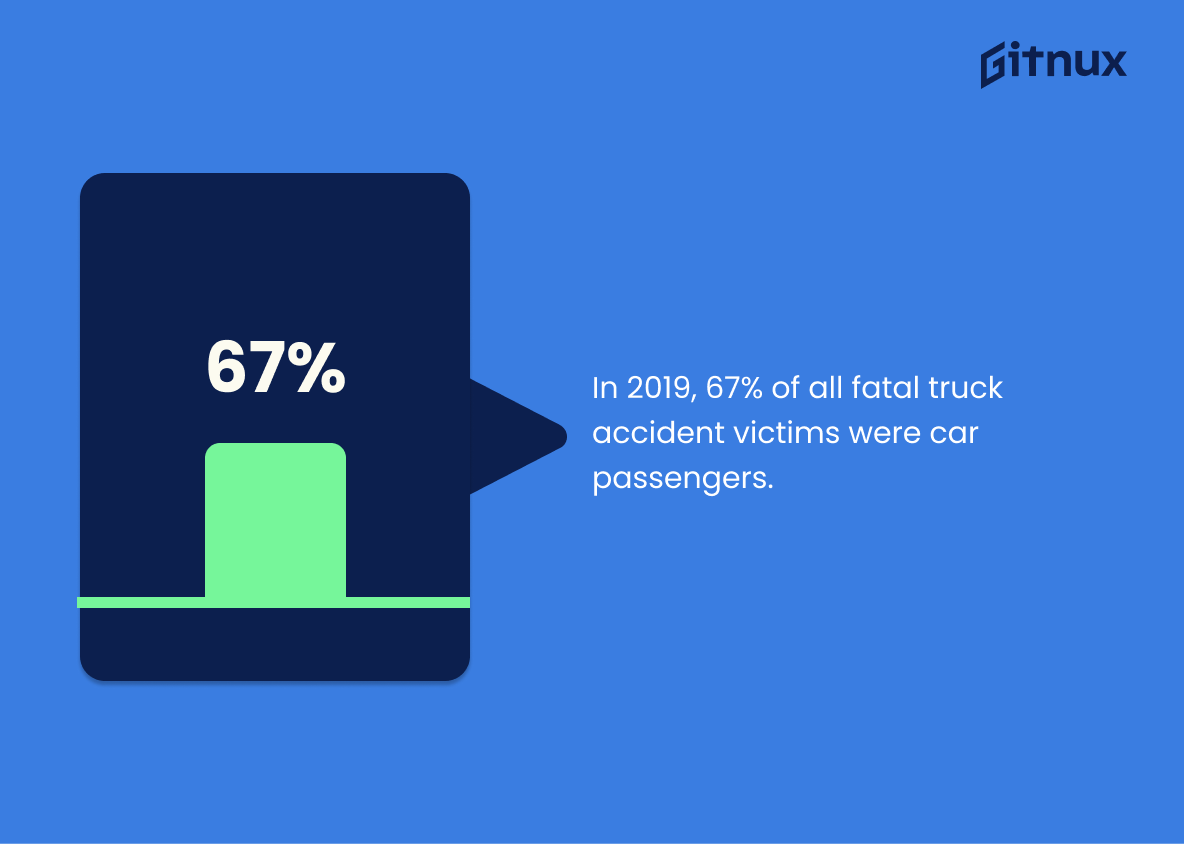Get ready to navigate the riveting realm of truck accident statistics. This dense landscape, laden with illuminating data, offers invaluable insights not just for those in transportation and logistics, but also for safety advocates, law enforcement, policymakers, and even everyday motorists. In this blog post, we dissect and decode the latest figures, deciphering trends, identifying causes and unmasking implications. Fasten your proverbial seatbelts, as we embark on a journey through the data highways of truck-related mishaps and the ground-breaking preventative measures they inspire.
The Latest Truck Accidents Statistics Unveiled
In 2019, there were 4,119 deaths from truck crashes in the United States.
Shedding light on the startling figure from 2019, where a total of 4,119 lives were abruptly ended due to truck crashes in the U.S, offers compelling insight into the magnitude of the truck-related fatalities situation. In a blog post that revolves around Truck Accidents Statistics, this particular data point serves as a critical touchstone guiding narratives, discussion and analysis.
The figure explicitly captures the gravity of the problem, offering readers a quantifiable perspective of the risk and devastation associated with truck accidents. Moreover, it compels readers to delve deeper into the issues surrounding truck driving safety, accident prevention efforts, and regulatory standards, anchoring the argument in hard fact and fostering a more informed and engaged readership.
By giving such a stark picture, this statistic acts as a clarion call, alerting both individuals and policy makers to the urgent need for effective interventions aimed at reducing such truck-related fatalities in the future.
Trucks were involved in 6.6% of all fatal crashes in Canada in 2017.
Placing a spotlight on the statistic of trucks being involved in 6.6% of all fatal crashes in Canada in 2017, a sense of grave relevance is stamped onto our discourse on Truck Accidents Statistics. As we decipher the threading nuances of these reports, this specific figure punctuates the narrative, indicating the substantial contribution of truck-related incidents to the overall demise on the roads. In translating these percentages into human lives, the urgency to delve deeper into prevention strategies and safety measures escalates. Thus, this statistic doesn’t just supply a number to a fact, but rather personifies the pressing need for collective and individual efforts to mitigate such terrifying occurrences within our communities.
In 2017, 54% of fatalities from truck accidents in Australia occurred in regional areas.
Unveiling the geographical disparity in truck accidents across Australia, the intriguing facet of the 2017 truck accident dataset points towards an alarming 54% fatalities occurring in regional areas. This intriguing piece of data serves as a crucial cornerstone for understanding and mapping the gravity as well as the distribution of such incidents. A deeper dig into this statistic can highlight the plausible shortcomings in road safety measures, driver training protocols, and emergency medical assistance in these specific areas. Additionally, it fosters valuable dialogue around infrastructural adequacy and the need for targeted intervention strategies to counteract this disproportion. Hence, this stat is fundamental to the narrative of the blog post on Truck Accidents Statistics, providing it an indispensable depth and context.
Commercial trucks are involved in 2.4% of all car accidents in the United States.
Peering through the looking glass of truck accident statistics, it becomes apparent that commercial trucks play a part in 2.4% of all vehicular mishaps across the United States. Highlighting the silent whisper in the cacophony of accidents, this statistic unveils a pivotal narrative. It substantiates that although commercial trucks represent a miniscule fraction of total vehicles, their involvement in accidents is an issue that requires attention. Distilling it down, this number provides an essential benchmark, shedding light on the safety risks surrounding commercial trucking. With this understanding, we can navigate the path towards improving road safety, mitigating risks, and carving out effective policy measures. So, as we immerse ourselves in the maze of truck accident data, remember, even a seemingly small number like 2.4% can echo loudly in the grand concert of road safety.
Tractor-trailers are involved in 68% of all fatal truck accidents.
Delving into the cold figures of truck accidents, the stark revelation that tractor-trailers feature in about 68% of all fatal truck accidents is illuminating. This isn’t just an interesting fact, but a sobering reality check that puts into perspective the catastrophic potential these vehicles possess. When considering the safety landscape of the trucking industry, this piece of information paints a vivid, albeit alarming, picture of where the most significant risks lies – providing a jumping-off point for the discussions, strategies, and policy suggestions needed to significantly enhance the safety in the sector. Thus, it’s the compass by which we navigate our exploration of truck accident statistics.
In South Africa, trucks are involved in an average of 15% of fatal road accidents.
Highlighting this fact – that trucks in South Africa are implicated in an average of 15% of fatal road accidents – serves as a crucial cornerstone in our blog post on Truck Accidents Statistics. It underscores the magnitude of the issue, accentuating how pivotal truck-related incidents are within the broader realm of road tragedies. Furthermore, it provides substantial context, enabling readers to better understand the association between the factors contributing to these accidents and their dire outcomes, providing a springboard for deeper analysis and discussion. This statistic, effectively woven into the narrative, creates a potent awareness of the situation, stirring both contemplation and dialogue around measures that can potentially alleviate this distressing occurrence.
In 2018, truck crashes accounted for 11.1 percent of all fatal vehicle crashes in the US.
Unveiling the stark reality of the threat lurking on the roads, the fact that truck crashes were the culprits in 11.1 percent of all fatal vehicle crashes in the US in 2018 drives home a powerful message. When explored within the sphere of a blog post dedicated to Truck Accident Statistics, this startling revelation forms a critical cornerstone. It not only sets the stage for a deeper understanding but also forces readers to confront the undeniable significance of truck-related fatalities. Essentially amplifying the urgency for improved safety measures, this statistic serves a stark reminder of the persisting danger and the unmet need for strategies to curtail these grim figures. In contexts like these, raw numbers morph into catalysts for change, encouraging reform and awareness.
In 2017, 415,000 reported crashes involved commercial vehicles in U.S.
Unraveling the narrative behind the towering figure of 415,000 reported crashes involving commercial vehicles in the U.S. in 2017 showcases the magnitude of this shadowy reality. This statistic bravely underlines the urgency for examining the intertwined impacts of such accidents on public safety, logistics, and infrastructure among other sectors. Stitched within this gritty narrative are compelling appeals for enhanced preventive measures, regulatory upgrades, and public awareness to mitigate the risks borne by commercial vehicles. Thus, this report offers not just mere numbers, but a thoughtful interrogation into the realm of truck accidents and their immediate and long-term implications.
Kentucky saw a 65% increase in the number of fatal truck accidents between 2009 and 2017.
Highlighting the stark 65% surge in fatal truck accidents in Kentucky from 2009 to 2017 signifies a worrying escalation for road safety in the area. This would be a red-flag to policy-makers, researchers, truck drivers, and other stakeholders invested in improving transportation safety. Not only does it provide an understanding of the emerging patterns and tendencies of truck-related accidents, but it also serves as a call for immediate attention and action to dissect the reasons and undertake efforts for a safer vehicular environment. An increase of this magnitude is a potent indicator of deeper seated issues, which, if addressed correctly, could make the roads of Kentucky safer for everyone.
In 2017, 4,889 large trucks and buses were involved in fatal crashes, a 9-percent increase from 2016.
When navigating the world of truck accident statistics, there are certain figures that truly send a shudder down one’s spine. The sobering count of 4,889 large trucks and buses involved in fatal crashes in 2017 does just that. This grim tally isn’t just a cold, hard number – it’s a 9-percent surge from 2016, sharply illuminating the escalating trend of such lethal incidents. This fact serves as an urgent wake-up call to the trucking industry, regulatory bodies, and the public at large, compelling us to deeply probe the factors behind the upswing and to strategize more effective safety measures. Mighty as they are on our roads, these giant vehicles carry heavy responsibility and risk, beautifully encapsulated in this disconcerting statistic from 2017.
Large truck drivers involved in fatal crashes in 2018 had the highest percentage (5.3%) of previously recorded crashes compared to other drivers.
In the bustling torrent of traffic that characterizes our roads, there’s an undeniable crescendo of concern that revolves around a looming heavyweight – large trucks. A spotlight into 2018’s truck accident data reveals a chilling trend; large truck drivers implicated in fatal accidents took the infamous lead, making up 5.3% of drivers with prior crash records. This tango with tragedy presents an alarming portrait of perennial peril, serving as a stark warning for the need for stricter regulation and more serious safety measures within the trucking industry. It also underscores the undeniable importance of continuous driver training and systematic reevaluation of the current licensing process. Highlighting this statistic in a truck accident blog post masterfully melds critical information with practical implications, thereby enabling readers to comprehend the truly multifaceted nature of truck accident scenarios.
Texas leads in fatal truck accidents, with 664 in 2018.
Highlighting Texas’ lead in fatal truck accidents, with a staggering 664 incidents in 2018, emphasizes the gravity of the situation at hand. In a landscape etched with vast open roads, this eye-opening figure thrusts a shadow over the Lone Star State. It not only serves as a blinking neon sign for policy makers, truck drivers, and vehicle manufacturers to ramp up their safety measures, but also adds weight to the relentless symphony of numbers and facts drumming through our blog post on Truck Accident Statistics. This stark data point underlines the pressing need for extensive reforms and preventive strategies to tame this ruinous beast of road calamity.
In 2014, 74% of fatal truck accidents occurred on weekdays.
The striking revelation that 74% of fatal truck accidents in 2014 occurred on weekdays unveils a compelling narrative. If we delve into the dynamics of a typical week, weekdays form the backbone of commercial, logistical, and industrial activities. Trucks, the indispensable juggernauts of the supply chain, are more likely in full operational mode in this period. This raise in demand potentially leads to increased driver fatigue, haste, and pressure, escalating the chances of mishaps. Thus, the statistic provides a significant cornerstone for the blog post, underpinning strategies to mitigate such fatal occurrences and bringing attention to the call for stricter regulations during heavy operational periods.
In 2019, 67% of all fatal truck accident victims were car passengers.
Unveiling this somber statistic – that 67% of all fatal truck accident victims in 2019 were car passengers – we shed light on a chilling dimension of our road safety panorama. It underscores the inordinate risk faced by car passengers when involved in collisions with large vehicles like trucks. This percentage highlights the critical significance of truck accident prevention measures and the desperate need for effective vehicle safety regulations. When interpreted correctly, it also navigates towards the necessity for car manufacturers to integrate more advanced safety features and for drivers to take precautionary steps when sharing roads with trucks. Offering such impactful numbers, the blog post aims to raise awareness and prompt action in improving road safety measures.
Conclusion
To sum up, truck accidents can have severe, often fatal, consequences, yet they continue to be a significant concern on our roads. The statistics highlight an urgent need for improved safety measures, stricter regulations, and better training for truck drivers. Nevertheless, understanding these statistics is the first step in identifying problem areas and implementing effective strategies to decrease these alarming numbers. Awareness about truck accidents is an important aspect of safe driving and everyone, from truck operators to everyday road users, has a role to play in reducing these figures. Little by little and with everyone’s effort, we can aspire to safer roads where truck accidents are a rare occurrence rather than a tragic regularity.
References
0. – https://www.www.bitre.gov.au
1. – https://www.tc.canada.ca
2. – https://www.www.iihs.org
3. – https://www.researchspace.csir.co.za
4. – https://www.cdan.nhtsa.gov
5. – https://www.transportation.ky.gov
6. – https://www.www.fmcsa.dot.gov
7. – https://www.www.nhtsa.gov
8. – https://www.crashstats.nhtsa.dot.gov
